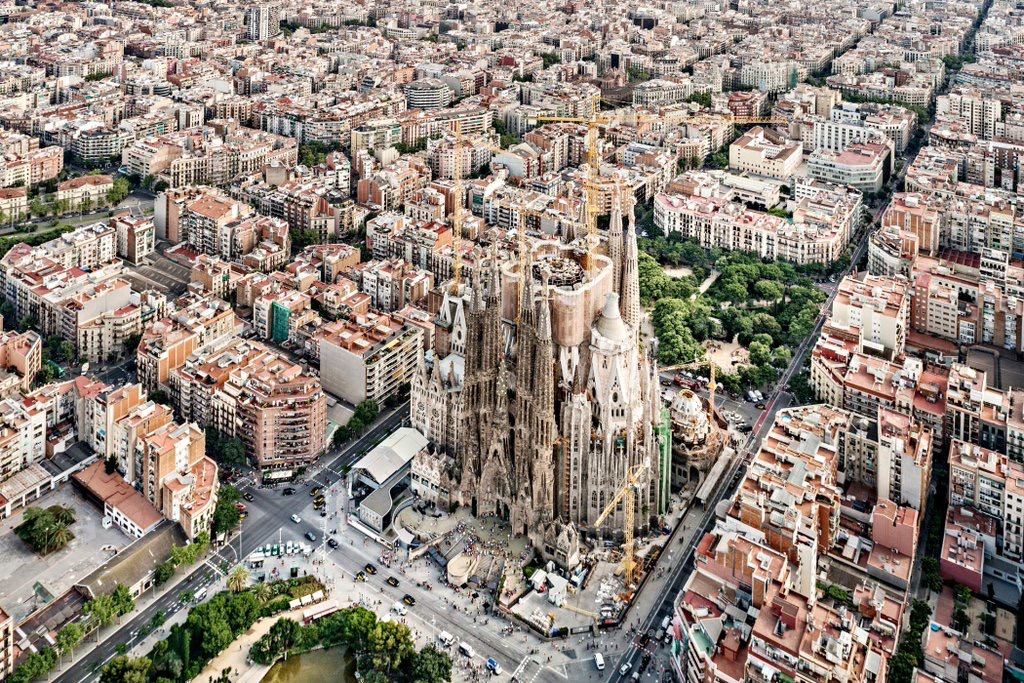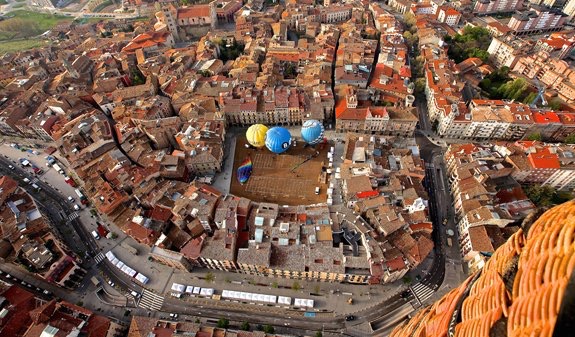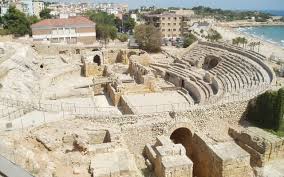CITY TOURISM PROVIDES VISITORS WITH NEW EXPERIENCES AND KNOWLEDGE AND ALLOWS THEM TO GET TO KNOW A WEALTH OF HERITAGE, HISTORY AND CULTURE.

City tourism is one of the most interesting proposals that allows you to get to know other cultures, customs, or familiarize yourself with cultural, tourist, leisure, and even gastronomic icons by touring the most emblematic cities or capitals, which will bring new experiences and knowledge.
In Catalonia, Barcelona is one of the favorite European destinations for hosting all kinds of scientific and business meetings: congresses, conventions, product presentations, or incentive trips.
Following significant urban transformation in Barcelona during the 20th century, which culminated in the distinctive Eixample district, there are some of the most distinctive Catalan modernist buildings in Barcelona and its metropolitan area that are must-visits. Also noteworthy is the great work of Antoni Gaudí, one of the most recognized architects of this modernist movement, known for internationally acclaimed works like Casa Milà (La Pedrera), Casa Batlló, and the Sagrada Familia. Barcelona boasts all the attractions of great Mediterranean cities, plus one that makes it unique: its region. The cultural, gastronomic, and sports offerings of Barcelonès hide secrets you must discover. In Catalonia, there are other charming towns and cities that deserve visitors’ attention.
The province of Barcelona spans a vast territory between the Cadí mountain range and the Mediterranean Sea, offering great scenic contrasts and a rich cultural history. The coast extends along 100 kilometers, dotted with beautiful fishing towns and cities that have preserved their authenticity over the years.

A WALK THROUGH THE GOTHIC. The Medieval Heart of Catalonia.
Before delving into the medieval heart of the province of Barcelona, the Vic Cathedral (14th century)—which contains an elegant open gallery cloister—and the Episcopal Museum of the same city are good starting points for the Gothic route. Not far away, the Seu de Manresa or the Church of San Miguel de Cardona are icons of this same art. In Barcelona, the Gothic also brings life to major civil buildings such as the Palau de la Generalitat, the City Hall, or the Drassanes (Dockyards), the best-preserved medieval shipyard building in Europe. In Barcelona, we must also remember the Gothic palaces of Montcada Street, the Basilica of Santa Maria del Mar, one of the most outstanding examples of Catalan Gothic, and the Basilica del Pi, with a majestic façade and one of the largest rose windows in the world.

On the medieval route through the heart of Catalonia, we find two towns that stand out for their history and culture. On one hand, Manresa, a city with a marked spiritual character combined with a rich and diverse cultural and commercial life. This city is also the final destination of the Ignatian Way, which follows the steps of Saint Ignatius of Loyola. With vestiges of the medieval and Gothic city like the Seu and Balç Street, Manresa also boasts an important historical heritage in Baroque style, linked to the legacy of Saint Ignatius, and a rich modernist and industrial past, with a set of buildings, museums, and elements related to this period. On the other hand, Vic, a center that preserves a significant historical and artistic heritage. Its old town, with a medieval layout, houses masterpieces of all architectural styles: a Roman temple from the 1st century, the Romanesque bell tower of the cathedral, its Gothic cloister, and medieval walls, as well as numerous Baroque buildings and notable examples of modernism. The Vic Museum of Medieval Art, declared of national interest, displays an exceptional collection of medieval art.
One of the most attractive regions in Catalonia is Girona, both for its city and its natural and maritime surroundings.

Girona has the charm and magic of great cities but the welcoming essence of villages. It offers a wide range of tourist, cultural, and historical activities, and a rich social life with events and popular festivals of great interest.
The city preserves an old medieval quarter that rises up to the imposing cathedral, through the shady alleys of the Old Quarter, while on the other side of the river stretches the more modern and orderly part. The most famous image of Girona is formed by the colorful houses with painted facades along the banks of the Onyar River. In the city, highlights include the Gothic Cathedral of Santa Maria (11th-18th centuries), the Basilica of San Félix (13th-18th centuries), and the Monastery of Sant Pere de Galligants (12th century), among other notable elements of the city. Girona’s attraction is not limited to its history or architecture.
The Parc de la Devesa is one of the most pleasant urban green spaces in Catalonia, and the city’s numerous museums offer a wide cultural range throughout the year.

De la zona de Tarragona, la Historia sale de las piedras. La ciudad ha ido especializándose en actividades de reconstrucción histórica. La antigua Tarraco era una pequeña Roma, una ciudad portuaria, abierta al Mediterráneo, donde se hablaban multitud de lenguas. Destaca su Anfiteatro, un edificio de forma oval construido el siglo II a poca distancia del mar, cuyos graderíos se excavaron en la roca. También es un punto de visita notable el barrio del Serrallo, típico de pescadores, donde se subasta por la tarde el pescado que se pesca durante todo el día. Se trata de un área pintoresca, con su propia personalidad y con restaurantes con encanto, donde saborear los mejores pescados y mariscos de Tarragona.
In the Tarragona area, history comes to life from the stones. The city has specialized in historical reconstruction activities. Ancient Tarraco was a small Rome, a port city open to the Mediterranean where many languages were spoken. Its amphitheater, an oval-shaped building constructed in the 2nd century close to the sea, is a highlight, with seating carved out of rock. Another notable spot to visit is the Serrallo neighborhood, typical of fishermen, where the day’s catch is auctioned in the afternoon. It is a picturesque area with its own personality and charming restaurants where you can taste the best fish and seafood of Tarragona.
Its surroundings also offer significant tourist and cultural attractions. The Cistercian Route is a major cultural tourism offering in a rural setting that combines culture, gastronomy, and nature, with the monasteries of Poblet, Santes Creus, and Vallbona. Other routes, such as Montblanc, can transport you to another era, or the Priorat route brings you closer to a region with top-quality local products. Also noteworthy is the modernist route in Reus, which allows you to discover the most interesting modernist facades.
Following the coast southward, you reach the Ebro Delta Natural Park, a wetland area characterized by tranquility and bird variety, as well as great ecological interest. This large deltaic plain of 320 square kilometers, where the Ebro River branches out and flows into the sea, is the most important wetland area in Catalonia and one of the key areas of the Mediterranean. The area near the sea is made up of large lagoons and marshes, dunes, and sandy areas, with small patches of riparian forests along the riverbanks. The naturalist and ornithological interest of the Ebro Delta is internationally renowned. The flat landscape of the delta, dominated in the distance by the imposing mountains of the Ports, has a strong personality. Inland, there are extensive rice fields, with a changing appearance according to the seasons (earthy in winter, flooded in spring, and green in summer). In the interior, the Els Ports Natural Park also combines nature and wildlife. In Miravet, south of Ribera del Ebro, the impressive castle stands out as one of the best examples of Templar military architecture in the West.
Finally, the PortAventura World theme park and the towns of Salou, Cambrils, and La Pineda are four of the main points of interest on the Costa Dorada.

Lleida, located at the foot of the two hills on which the Seu Vella and the Templar Castle of Gardeny rise, is the perfect definition of a city with character. Over the centuries, it has hosted different cultures (Roman, Visigothic, Jewish, Arab, etc.). These civilizations have contributed to the sustainable and exemplary growth of the city, characterized by its orchards—the green belt that surrounds it and supplies fruit and vegetables to all of Catalonia—and by natural spaces such as the Mitjana Park or the Campos Elíseos. Moreover, Lleida stands out for its geostrategic importance as a gateway to Europe and a link between the Mediterranean and the plateau.
Lleida also boasts a notable natural environment and Romanesque heritage, highlighted by Taüll, a charming mountain village that belongs to the Pyrenean municipality of the Boí Valley. Its stone houses host two 12th-century Lombard Romanesque churches declared World Heritage Sites: Sant Climent de Taüll and Santa María de Taüll. The former is considered the most emblematic work of Catalan Romanesque, with its six-story bell tower and fabulous murals such as the Pantocrator, a true gem preserved in the National Art Museum of Catalonia (MNAC).
Further up, you will find the Boí Taüll Resort ski station, where you can enjoy the winter mountain by gliding down the snowy slopes. The surrounding nature offers special moments for enthusiasts, as part of the area is within the Aigüestortes and Estany de Sant Maurici National Park, an ideal setting for excursions and hikes.
GASTRONOMIC CATALONIA
Catalan gastronomic culture is heir to the Greek and Roman traditions, two cultures that gave rise to the Mediterranean culinary trilogy: olive oil, wheat, and wine, products with which the refined cuisine of the upper classes began to lay the foundations of structured meals. Gastronomy is part of the country’s cultural heritage because it stems from the wisdom and popular traditions. The link between cuisine and territory is especially strong in our country and well expresses the way our people are. The international success of Catalan cuisine has been the result of collective work and the sum of many centuries of tradition with a frank predisposition to avant-garde and cultural fusion. Moreover, the country offers a series of eno-gastronomic routes to get closer to local products, as well as numerous museums related to gastronomy, such as the Embotit Museum in Castellfollit de la Roca; the Chocolate Museum in Barcelona; the Ecomuseum-La Farinera in Castelló d’Empúries; the Olive Oil and Rural World Museum in Castelldans; the Olive Oil Theme Park in Les Borges Blanques-Juneda, or the wine museums of Vilafranca del Penedès and the Espluga de Francolí.
.

Catalonia is also one of the most powerful wine tourism destinations in the world. There are twelve Designations of Origin (DO) and over 300 wineries to visit, old and new, small and large, close to the sea or in the mountains. You can discover the world of Catalan wine and cava through the landscape, its modernist ‘wine cathedrals’, tasting its native varieties, outdoor activities, participating in the harvest, or touring the vineyards by bike or even on horseback.
TRANSPORTATION

To enjoy these tourist and gastronomic experiences, ESTEVE Business Cars has a wide and modern fleet of different types of vehicles, whether private cars and minivans with drivers or minibuses of different capacities. All of them have an exclusive and very corporate interior design that makes the journey an unforgettable experience, both for comfort and luxury. Recently, new minibus units have been added, with a design and comfort that give exclusivity and a different sense to the travel experience, meeting our clients’ demands with every detail based on future concepts. This new vehicle models the general feeling of ComfortClass and meets the highest demands and expectations of our clients.
CORPORATIVE VIDEO Esteve Business Cars
